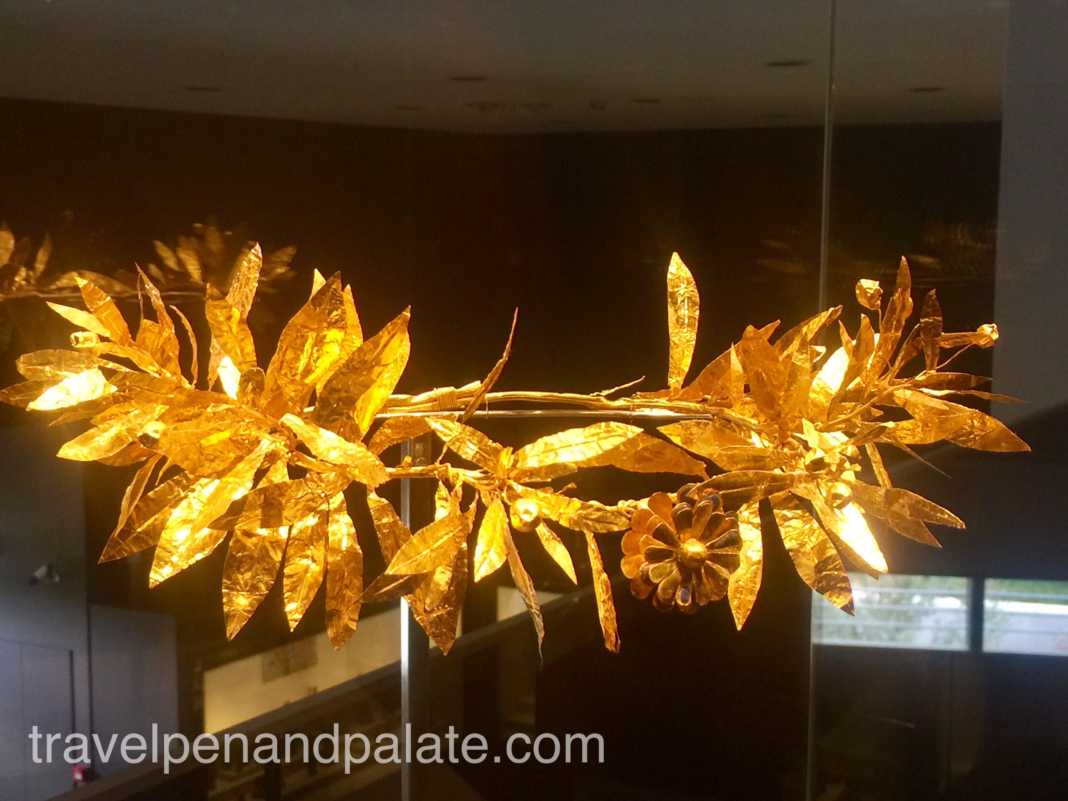What forces make a legendary region a tourist attraction? Conflict and nature are two factors. Pella was Alexander the Great’s new showpiece capital and over 1,500 years later nearby Edessa profits greatly from an earthquake.

Atop the Rock of Edessa, a thousand feet above the fertile Loggos Valley, the fractured Edessaios River snakes through the cityscape. Fed by two mountain lakes, the river splinters just outside Edessa into river-delta-like tributaries. They make their way by canals and stream diversions through the tree canopied town to the precipice where the largest of the Edessa waterfalls, Karanos, tumbles hundreds of feet to the Loggos Valley.
It was not just the fertility of the well-watered agricultural rich plains of the Edessa/Pella region that attracted the attention of Alexander the Great in the 300s BCE when looking to relocate. According to tradition Alexander would have the Pozar River’s mineral rich, hot spring water brought to his mother to help with her rheumatism – a terrific brand endorsement.
Watering a golden age
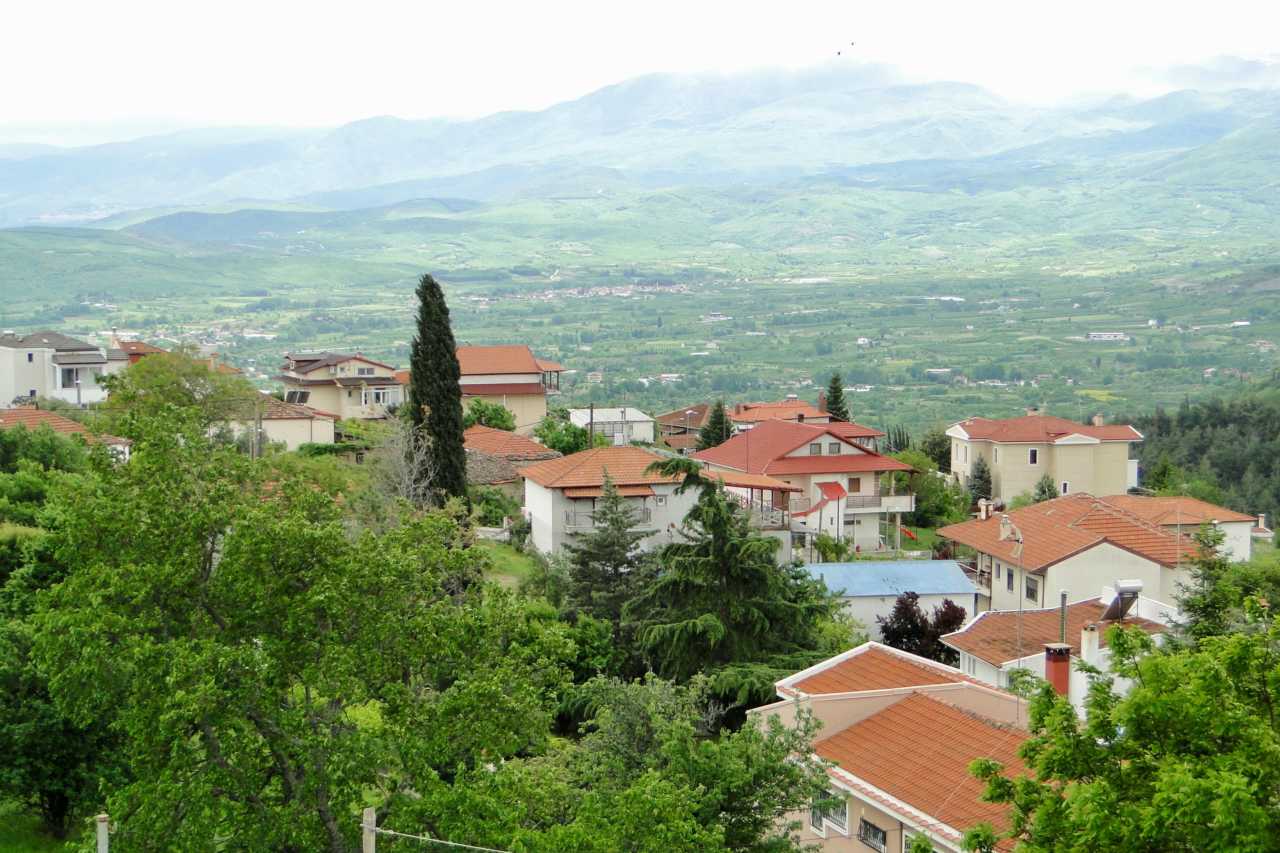
When Macedonia’s new capital city, Pella, was under construction ( 300s BCE) nearby Edessa had already been established for 400 years. It was advantageously located in the Loggos Valley at the base of the 1,000 foot tall Rock of Edessa whose top held its acropolis.
The city had a robust economy from agriculture and waterpower and now the wealth of the nearby capital. From Roman times (100s BCE) Edessa was a stop on the Via Egnatia connecting the Adriatic Sea with Asia Minor. A Roman/Byzantine bridge survives in the city.
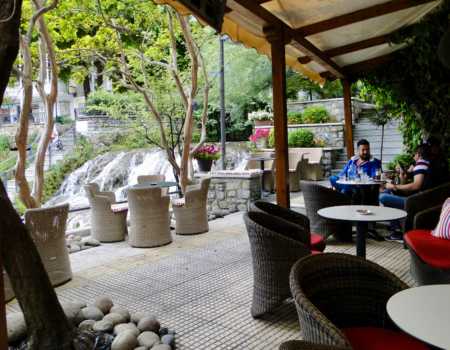
In the middle ages its strategic importance made Edessa a coveted region fought over by the Bulgarians, Byzantines and the Serbs. The turbulent 14th century witnessed momentous changes: 1340s the Serbs abandoned the lower town and moved the city up to the acropolis, 1380s the Ottoman Turks conquered the city and in 1395 an earthquake devastated Edessa and made significant alterations to the local topography.
What made the city unique, and then a tourist attraction, was its waterfalls feature. Two upper lakes eight kilometers north have always fed the Edessaios River, but it mainly flowed around the location of the upper town on top of the Rock. The 1395 earthquake fractured the topography causing the river to be diverted and fragmented into a variety of streams that still flow through the city to the cliff and watered a golden age.
Edessa Waterfalls Park
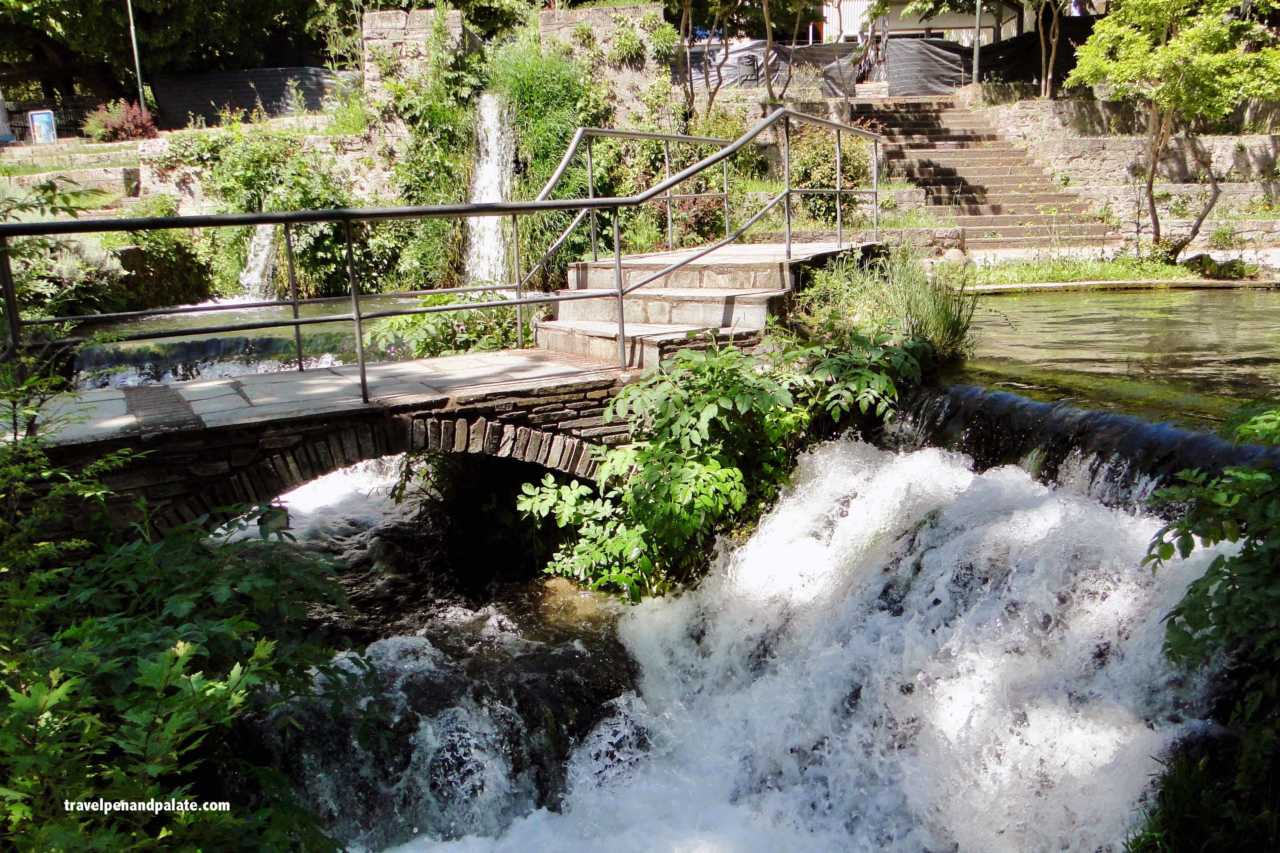
On the cliff edge in northeastern Edessa, where most intercity busses arrive, an exceedingly attractive park is filled with tall trees, flowerbeds and the gurgle of channeled water alongside slate walkways. Within the historic core of 18th and 19th century Edessa, this terraced water park is the entrance to Karanos Falls – at 310’ the highest in Greece. It’s a baby of a waterfall in geologic time being a result of the 1395 earthquake.
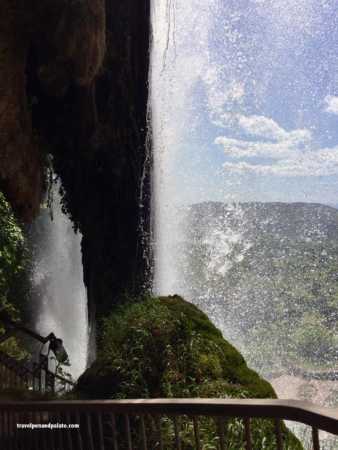
Until the 1940s, this area, next to the mills, was overgrown and it was difficult to even see the falls no less have access. Such was the fame of the Falls that during the Nazi occupation of Greece (1940–1944) German engineers designed and constructed most of the current park.
The walk down to the falls provides a panoramic view of the Loggos Valley below and several angles to see Karanos.
Do walk behind the huge curtain of water to enjoy the magnificent views of and through the tumbling falls. Named after Edessa’s legendary first king, Karanos today powers a hydroelectric plant well hidden in the distance among the lush vegetation.
The Open Air Water Museum

In the late 19th and 20th centuries Edessa became an industrial city based on “white coal.” Waterpower drove the economic engine – the ability to channel the fragmented river as it raced to the cliffs. By 1900 over 60 water-powered mills were, among other things, grinding grains and pressing sesame seeds, weaving textiles, making cherry liquors and powering a laundry machine for carpets.
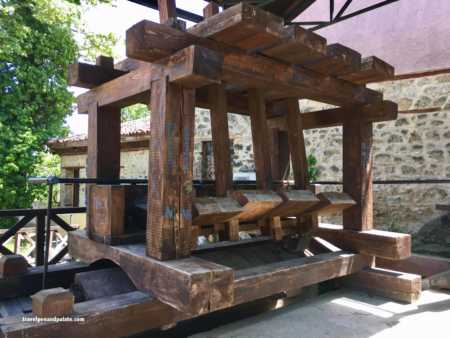
Post-war modernization led to the closure of the mills, but In the 1990s the Municipality of Edessa transformed the industrial area in the Varosi historic district closest to Waterfalls Park creating museum and recreation areas. The Open-Air Water Museum, which opened early in 2000, educates and entertains visitors on the history, impact and importance of water from the workshops of pre-industrial times into the 21st century with even a fresh water aquarium.
The layout of the Open Air Water Museum is as eclectic and charming as any Greek village. The old mills were already clustered based on water source and today meandering from one mill to another is to stroll through wild flowers and around half dismantled old stone walls – it’s postcard romantic. The mills themselves, as well as the historic Varosi district, preserve traditional Macedonian architecture.
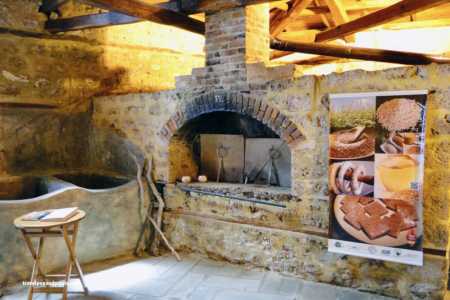
Food, textiles and carpets were major products of Edessa. Grain from the fertile plains of the Loggos Valley was ground in Edessa mills. Sesame seeds were pressed into oil and produced tahini. Cherries, introduced to Macedonia by Alexander himself, were both preserved and turned into liquors. The restored buildings contain the authentic machinery that was in use until the mid-1960s.
Turning your birthplace into a showcase
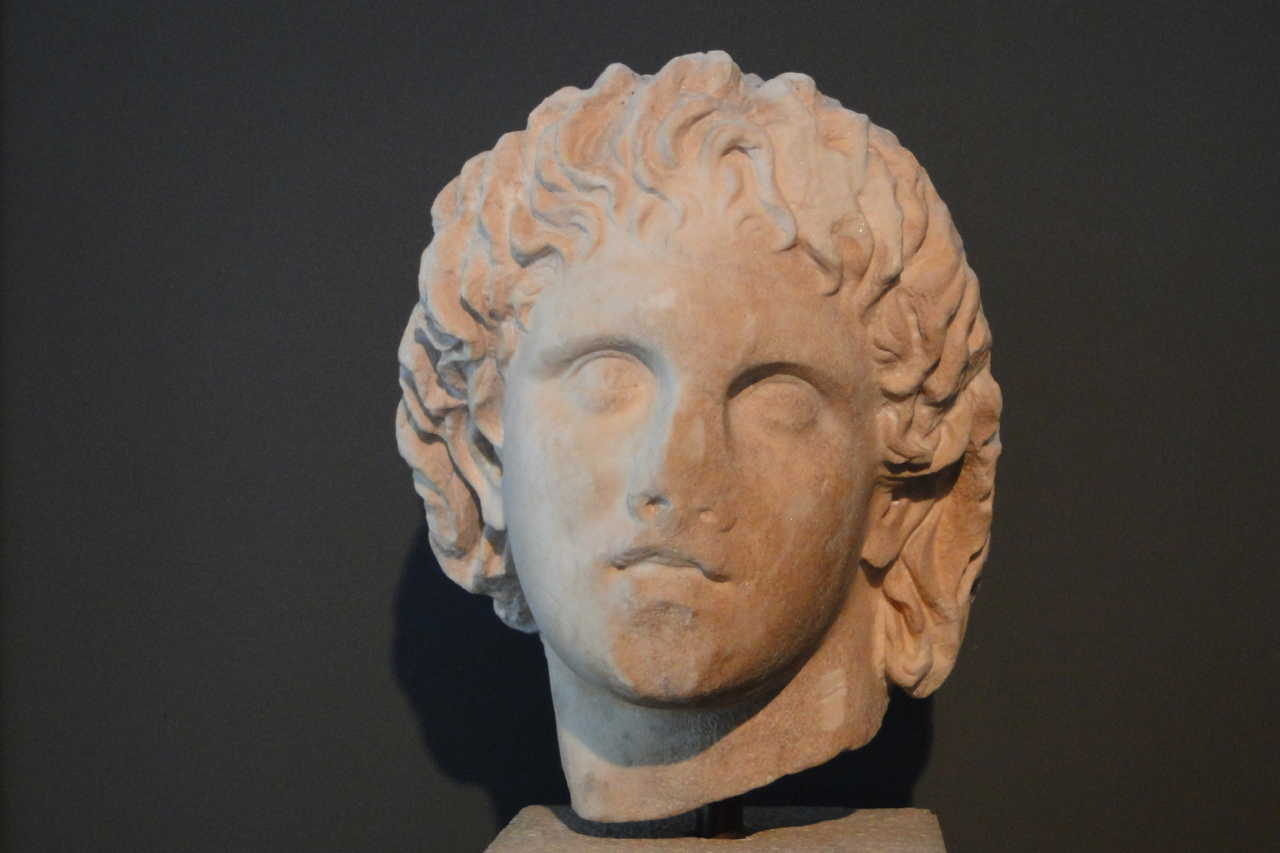
The Edessa/Pella/Virgina region was the very heart of classical Macedonia. It was from here that Philip II transformed Macedonia from a regional kingdom to the master of Greece and from where his son, Alexander the Great, built the world’s mightiest empire. Alexander was born in Pella.
Upon embarking on his conquests Alexander choose to transform Pella into an opulent city fit to administer his empire. Excavations since the 1950s have revealed large, well-built houses with colonnaded courts and rooms with intricate mosaic floors. The city was laid out on a rectangular grid plan with some boulevards more than 30 feet (10 m) wide.
Once more the regions water wealth was put to good use. Under the streets were terra-cotta pipes for distributing fresh water. Water was channeled into the city providing fountains, cisterns for drinking water, public bathhouses and even bathing facilities in private homes.

As the symbol of a world conqueror, the Palace of Pella was a vast half million square foot complex. The Agora (biggest ever in the ancient world) was 50% larger dominating the city as the administrative and commercial center of the empire. The goods of the ancient world were sold, international deals sealed, matters of state decided upon and major public entertainments watched by the people of the empire.
Despite being downgraded by the Romans after 200 years as Macedonia’s capital and a devastating earthquake later in its history, Pella was never forgotten. The wealthy of Pella ensured its legacy by including in their elaborate tombs objects from extraordinary works of glass art, intricate gold head wreaths to kitchen tools. Why it was not all plundered over the past two millenniums is amazing.
Amazing as well are the exhibits in the Pella Museum. Like so many in Greece, the architect used simple exterior lines, native materials and glass to compliment the landscape. The multilevel interior space maintains a feeling of being open in design with expansive walls of glass that look out onto the Pella archaeological site. The antiquities on exhibit define the term “museum quality.”
Loutra Pozar: nature provides
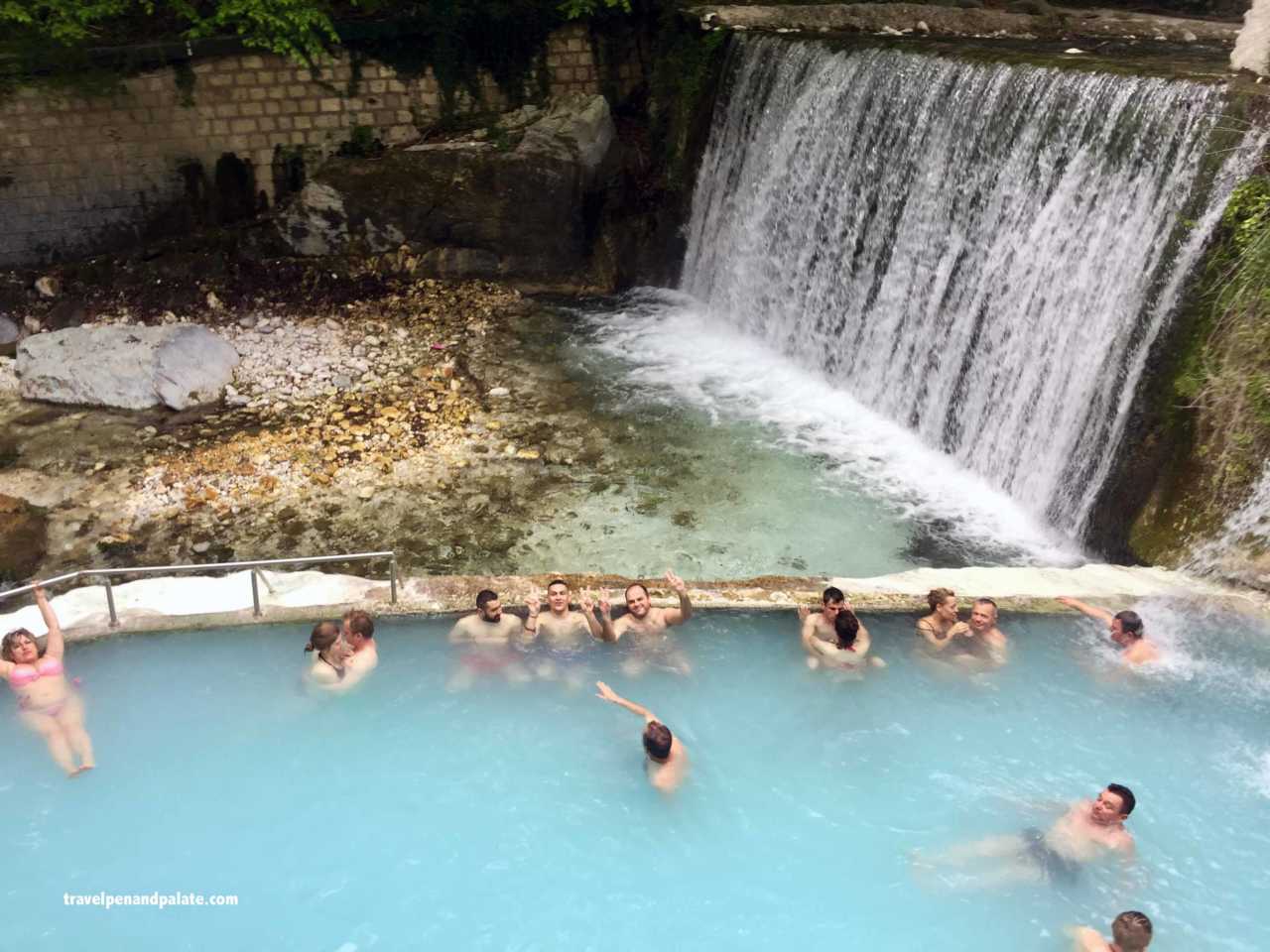
Visitors embrace what’s beyond their comprehension. Since ancient days the hot mineral springs of the Pozar River were sought after by no less than Alexander himself. By the 1930s thousands of tourists were arriving by train to visit the Byzantine monuments and the waterfalls in nearby Edessa. Down the road a bit Loutra Pozar had developed into a classic thermal springs spa.
To its advantage, the surrounding Black Forest has always provided numerous hiking possibilities and adds to the allure of natural hot springs as a winter activity. This makes the Edessa/Pella region a year round tourist attraction. Over 600,000 visitors arrive annually with August and December the busiest months.
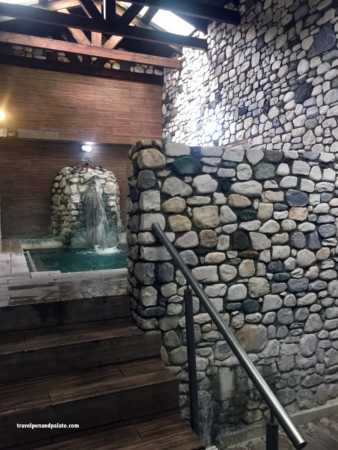
The thermal springs of Loutra Pozar seem to prove that “if you build it they will come.” In this case turquoise hot water (37 degrees C – human body temperature) is part of the geology. Yet the origin of its medicinal properties is shrouded in warm mist.
Loutra Pozar (Pozar Springs), located 24 miles from Edessa, is nestled at the foot of Mount Kaimaktsalan. The Pozar Thermal Springs facilities comprise individual baths, indoor and outdoor pools, hamams, spa and hotel. The Pozar hot springs have been viewed beneficial for rheumatism, skin conditions, respiratory and circulatory problems through bathing and/or drinking the water.
The nearby popular hiking area of the Black Forest owes its name to the density of the trees that let little sunlight reach the ground. Tradition has it the forest was one source of the ultra dense cornal wood used by the ancient Macedonian army for their formidable 20’ long sarissa spear. That spear rewrote infantry battle tactics for over a thousand years.
The now closed (and unusable) Avra Hotel opened in the 1910s as a sanitarium for wounded WWI soldiers since this region was close to the Macedonian Front. The Spa resort facilities opened in 1935. The new hotel, the Neon, opened in 1995. It offers 12 ensuite rooms. High season for the spa is September through March with many bus tours from the southern Balkan countries.
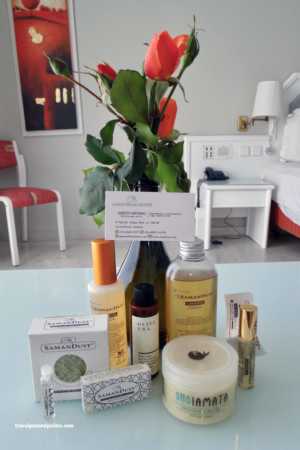
In cooperation with the Spa, the Saman Relax Center provides a menu of body treatments. Individual mineral baths are available. It is luxury to soak in salty, mineral laden body temperature water directly from the earth in an atmospheric, private blue tiled “cave” with candles, soothing music and a waterfall.
Founder Anestis Samaras has created a line of Saman natural skin products that mimic the mineral balance in the Pozar springa. Depending on uses a variety of herbs and Greek mastic are used in the formulations. Saman products are distributed in Germany as well.
It’s not its beauty…
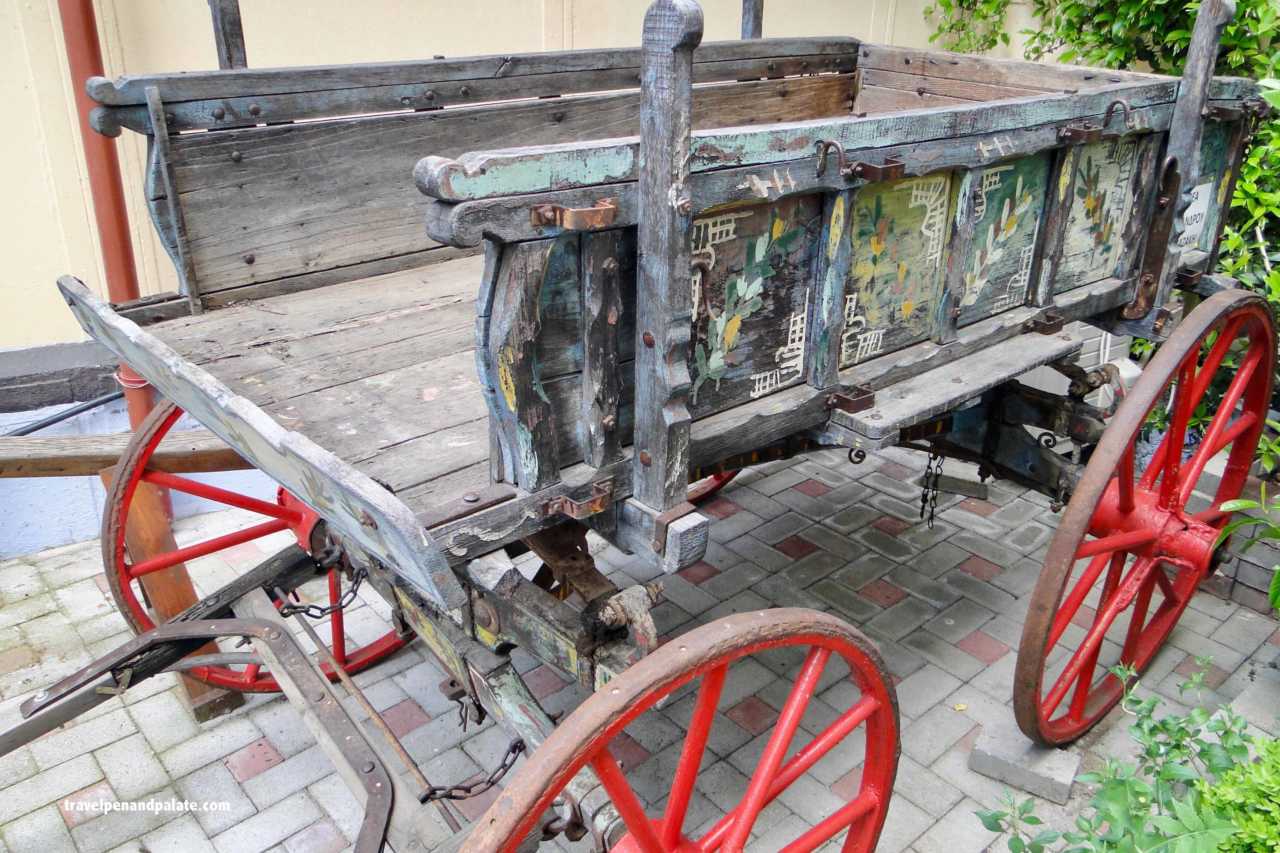
Like so much of this region, Giannitsa’s origin is ancient, but it is not a beautiful town. The wars of the 20th century, from the 1st Balkan in 1912 through the Civil War of the late 1940s, were devastating on the city. It was fought over because Giannitsa is an important town.
The Giannitsa Folklife Museum is near the former Turkish neighborhood (destroyed during the 1st Balkan War 1912) and not far from where in 1944 Nazi’s executed 100 citizens just to scare the population. Like a crowded antiques market without the dust, the Museum displays the rich popular life of Giannitsa and the region. The exhibits are the everyday objects and family memorabilia of decades.
The Historical Society, which operates the Folklife Museum, publishes a magazine and engages in outreach programs with all ages on the heritage of the Pella region. Archaeologist with the Historical Society are credited with the dig that found major burial bronze and gold helmets and jewelry on display at the Pella Museum.
Upon driving out of Giannitsa, though, there’s one constant to life right in your face. The city is still an economic powerhouse for companies in the processing and distribution of the region’s abundant agricultural products. Alexander would recognize his home turf: water was doing its job.

When you go: Edessa is an easy 55 miles (90 k.) west of Thessaloniki. It’s possible to drive, take a train or travel by intercity couch bus. Pella Archaeological Site and Giannitsa are within 25 miles (40 k.) from Thessaloniki. Both are on the route between Thessaloniki and Edessa.
Where to stay: Hotel Hagiati: Macedonian comfort in Edessa
Where to eat: A Central Macedonian feast from the Silk Road
- View Cafe Food-Bar (Tzibaepi Taverna), Klisokhóri
- Dionysos restaurant, Edessa
- Loxandra restaurant, Giannitsa
Special thanks: Edessa Municipality, Edessa Tourist Information Center and Pass Partout Tourism Marketing for facilitating my visit.
Travel with Pen and Palate every month to Greece and the world in the Hellenic News of America.


